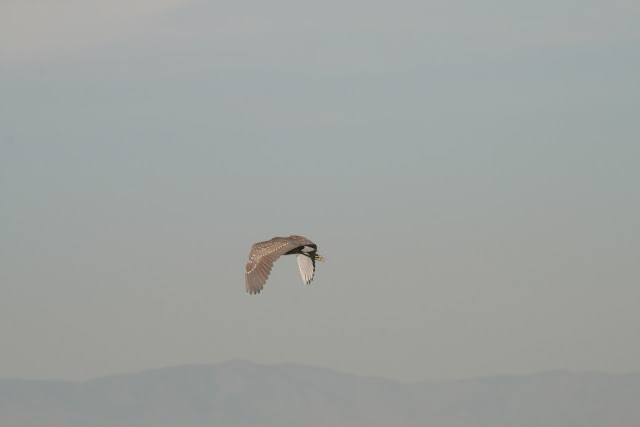I saw my first Black-crowned Night Heron many years before I started keeping a life list on a golf course. I thought it was one of the strangest looking birds I had ever seen. I had seen Great Blue Herons and to me it looked similar but with no neck. Black-crowned night-herons do not fit the typical body form of the heron family. They are relatively stocky and about 25 inches tall with shorter bills, legs, and necks than their more familiar cousins the egrets and "day" herons.
Adult black-crowned night-herons have black caps and backs, pale gray wings, white underparts, red eyes, and yellow legs. Two or three long white plumes, erected in greeting and courtship displays, extend from the back of the head. The sexes are similar in appearance although the males are slightly larger.
Black-crowned night-herons usually nest in colonies with other Herons and Egrets, the picture above is a rookery of Night Herons, Snowy Egrets and Cattle Egrets in Greeley Colorado.
Black-crowned Night Herons are found on every continent except Antarctica and Australia. They are the most widely distributed Heron.
 |
| Juvenile Black-crowned Night Heron |
Immature birds have dull gray-brown plumage on their heads, wings, and backs, with numerous pale spots. Their underparts are paler and streaked with brown. The first time I saw a juvenile BC Night Heron I got excited and thought for sure I had seem my first American Bittern but close inspection and consulting my field guide determined it was a juvenile BC Night Heron. I did finally see an American Bittern at the Federal Bird Refuge at Bear lake Utah. and it's the only one I have ever seen and don't have any pictures.
Black-crowned Night herons are abundant at Farmington Bay, I love to be out there at dusk when they get active and they seem to come out of everywhere.




No comments:
Post a Comment